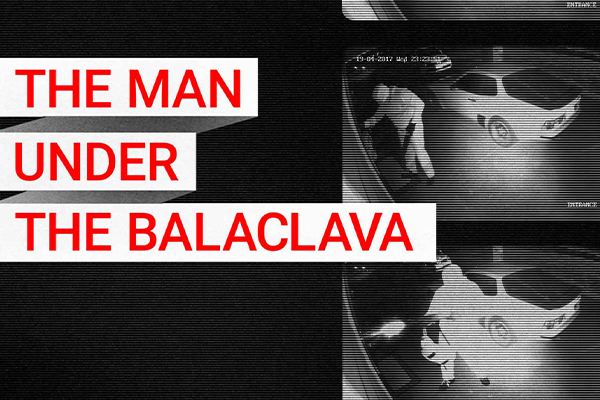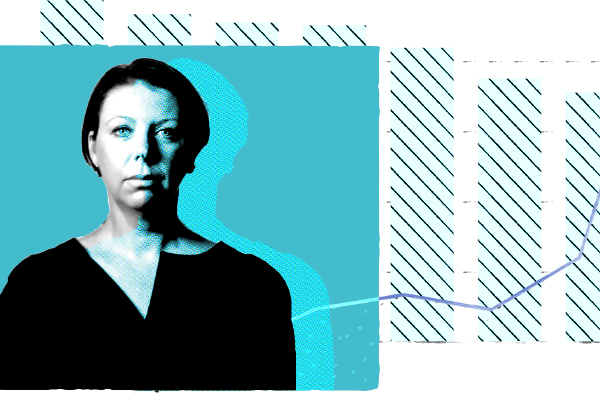

To keep traffic flowing smoothly during the day, road workers must work the graveyard shift to upgrade crumbling infrastructure.
Trustworthy, accurate and reliable news stories are more important now than ever. Support our newsrooms by making a contribution.
Contribute Now

The cold rain is coming down in sheets and shiny black tarmac glows orange in the street lights. It’s a Sunday night but a steady ribbon of red tail-lights stretches into the distance on State Highway 1.
Just off exit 410, in Auckland’s Albany, floodlights illuminate lines of trucks and 4WDs, stationary on the off-ramp, hemmed in by rows of cones and plastic barriers. The off-ramp is closed, but this isn’t a traffic jam. An army of NZ Transport Agency workers have parked up, ready to start on the latest stage of a $700m road upgrade.
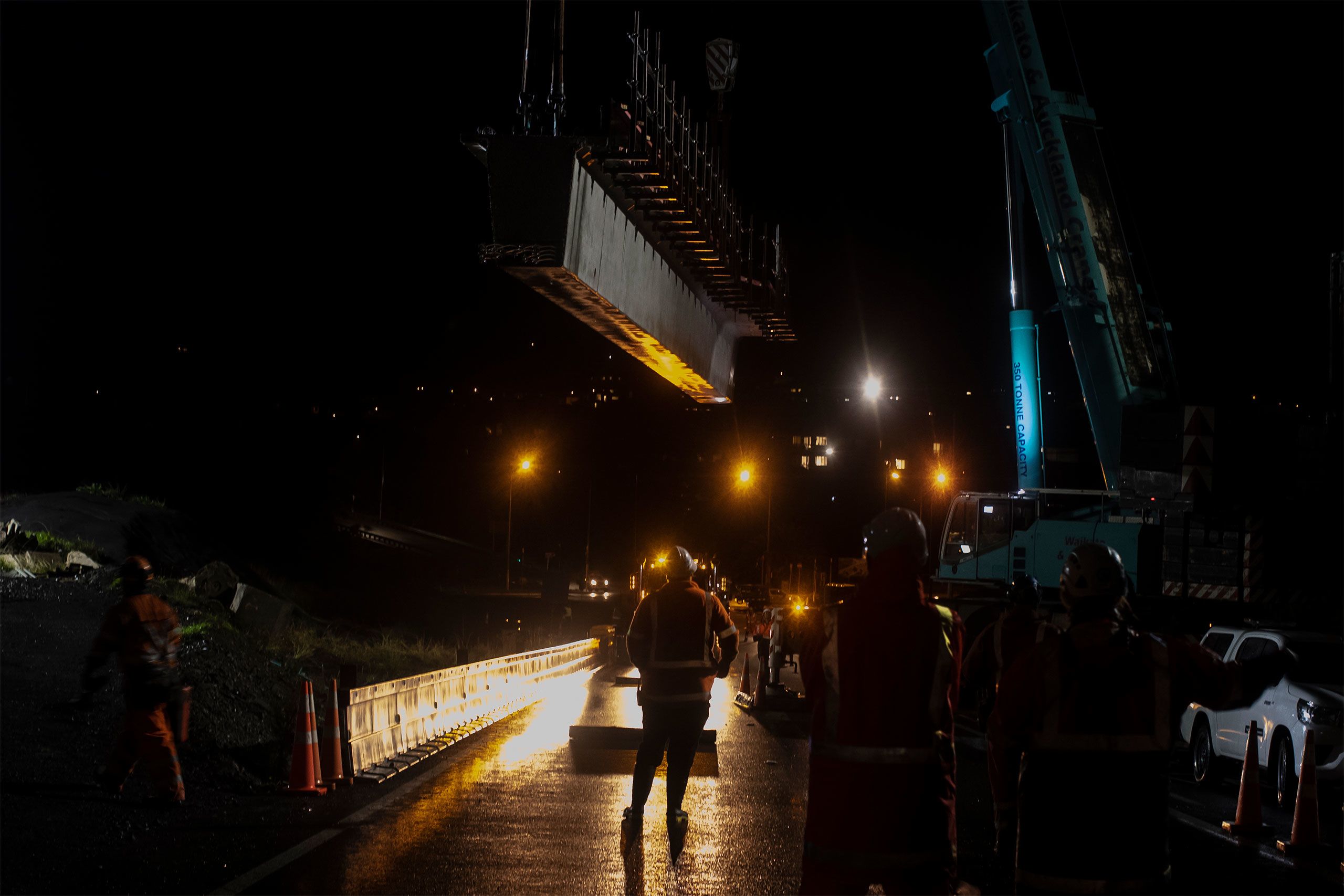
An NZTA night crew install prefabricated concrete beams across what will become a bus bridge.
An NZTA night crew install prefabricated concrete beams across what will become a bus bridge.
SH1 through the central city is the country’s busiest stretch of road, carrying more than 200,000 vehicles each day. The heavy traffic volume means many works would grind Auckland to a halt, so NZTA undertakes them at night.
“We don't want to do a night shift for the sake of doing night shift work,” traffic engineer Tim Emerson says.

Tim Emerson makes sure traffic is kept away from the roadworks.
Tim Emerson makes sure traffic is kept away from the roadworks.
But we definitely don't want to do something like this during the day.
The crew is installing prefabricated concrete beams across what will become a dedicated bus bridge.
“We have concerns with the public getting delayed, if we have to block the traffic while they lift the beams. We don't want to have traffic driving underneath the beams as well because that's a risk.
“We'll have to separate the public from site, close the road, put them on a detour, and get it done safely, efficiently.”
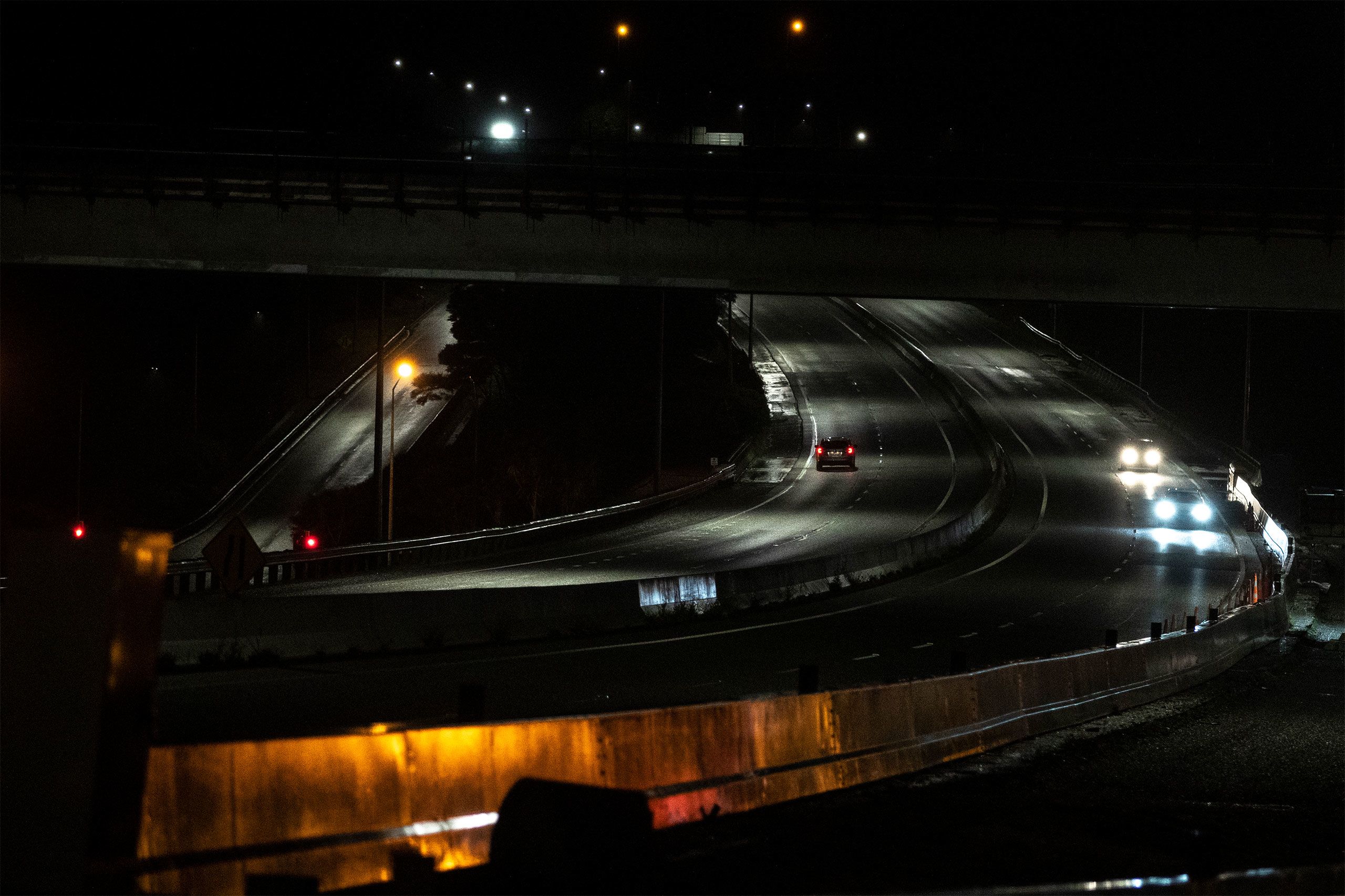
SH1 through Auckland's central city is the country’s busiest stretch of road, carrying more than 200,000 vehicles each day.
SH1 through Auckland's central city is the country’s busiest stretch of road, carrying more than 200,000 vehicles each day.
Shortly after the road closes, an enormous truck and modified trailer slowly rolls onto the site, painstakingly turning the corner. It is carrying the first of six beams, 30m long and 60 tonne each. Two giant cranes stand ready on either side of the road.
The downpour is heavy now, the workers’ jackets are slick with rain, and droplets sprinkle their clear safety glasses.
Everyone is dressed in fluorescent orange - convention dictates only emergency responders wear yellow high-vis on the road network.
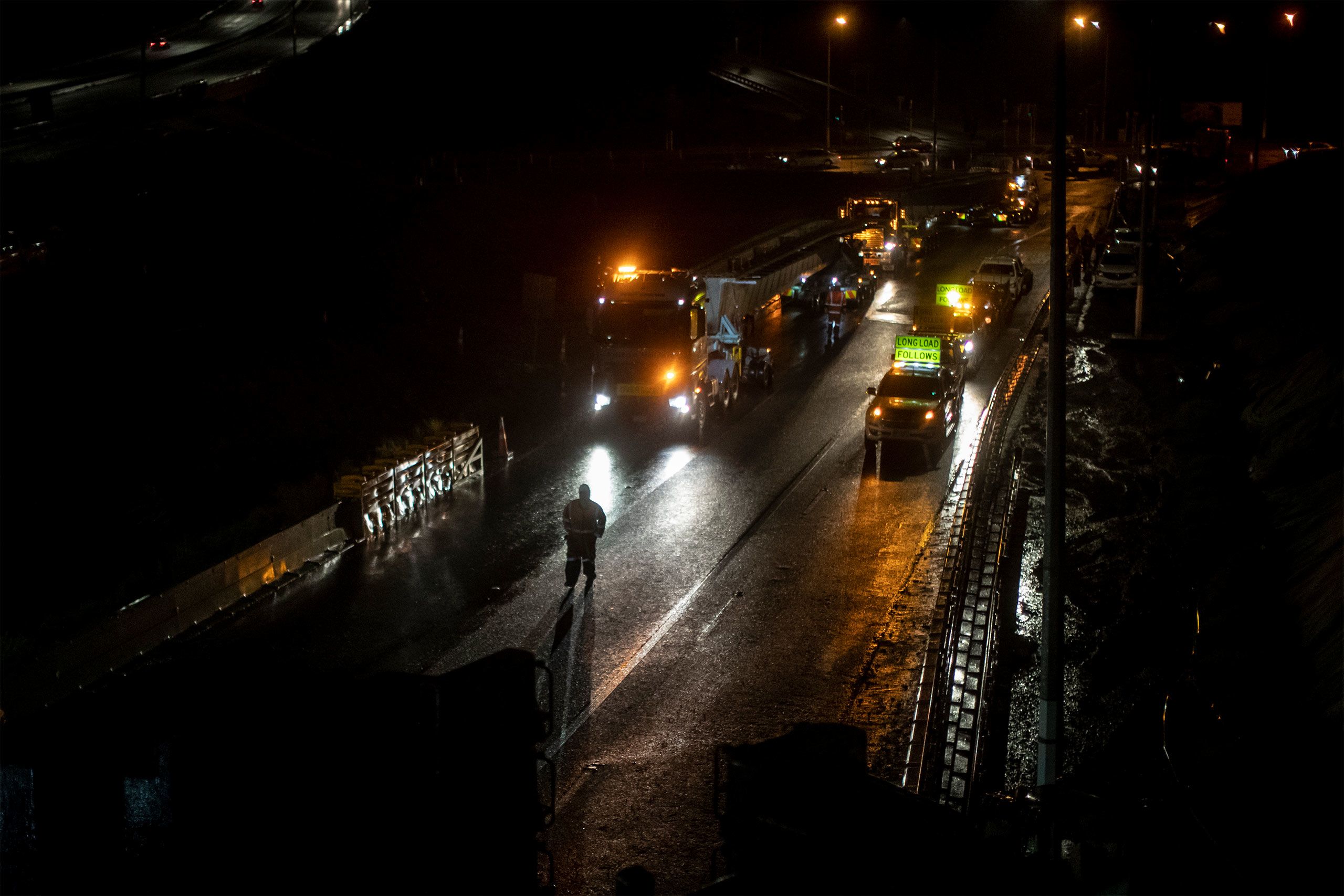
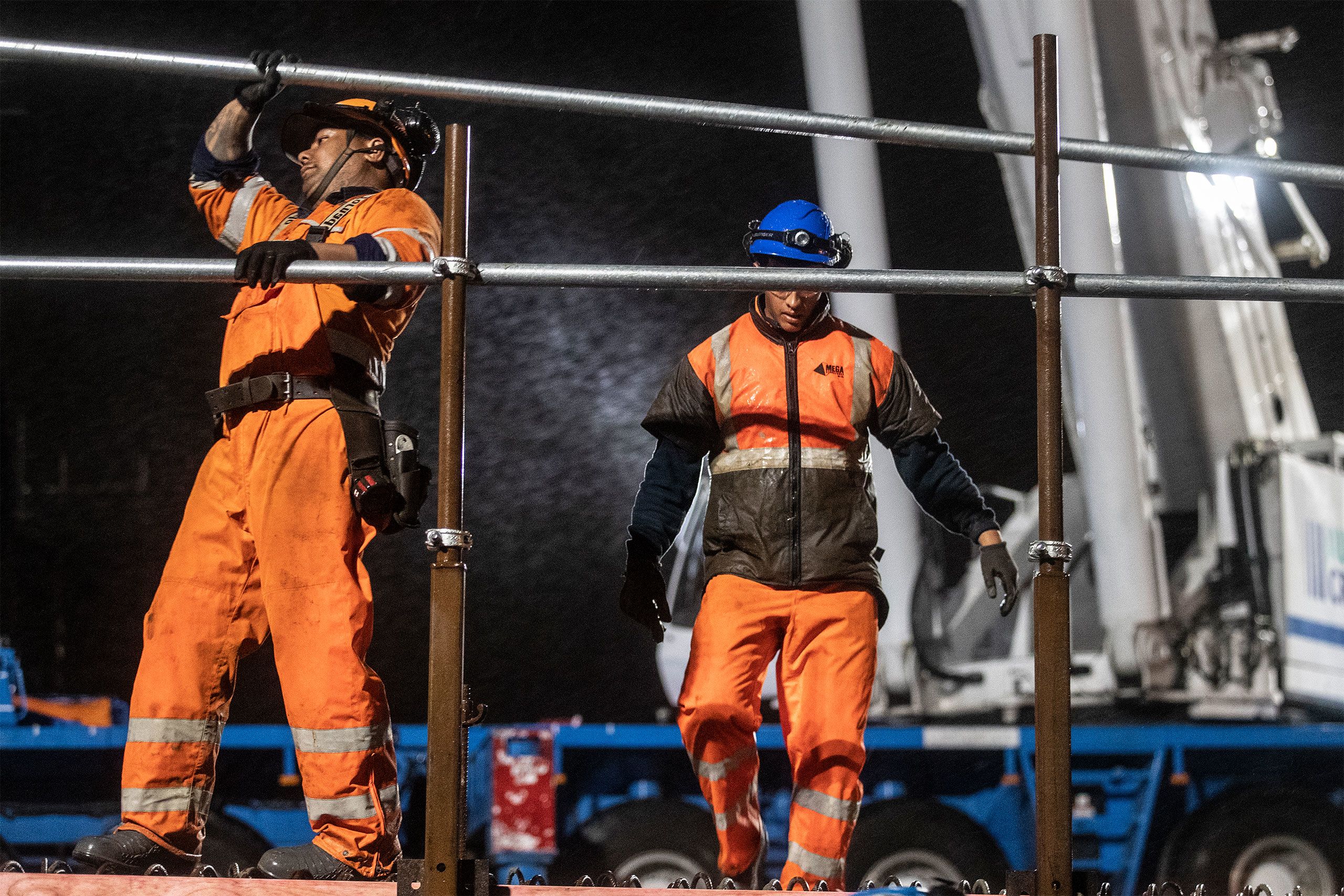
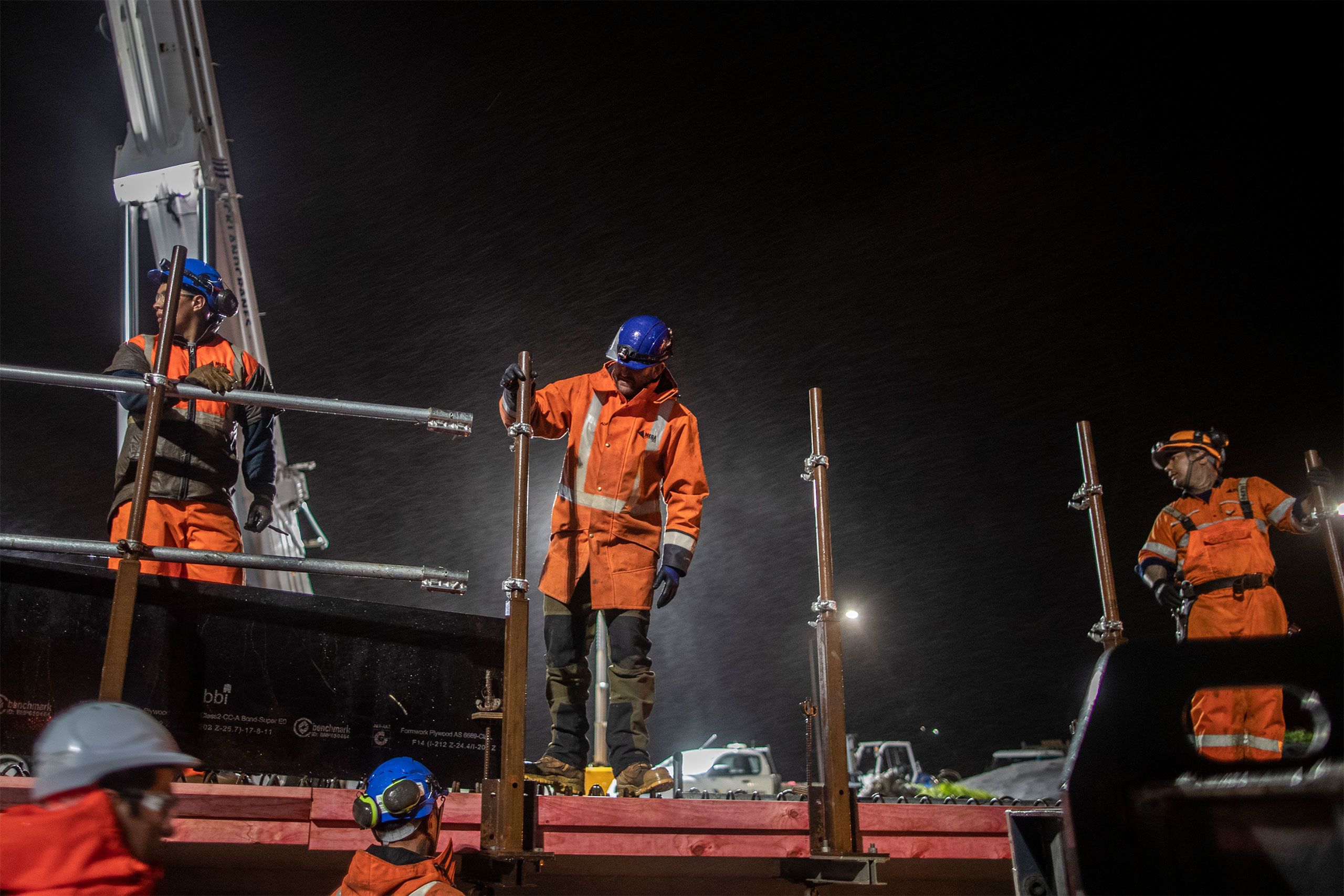
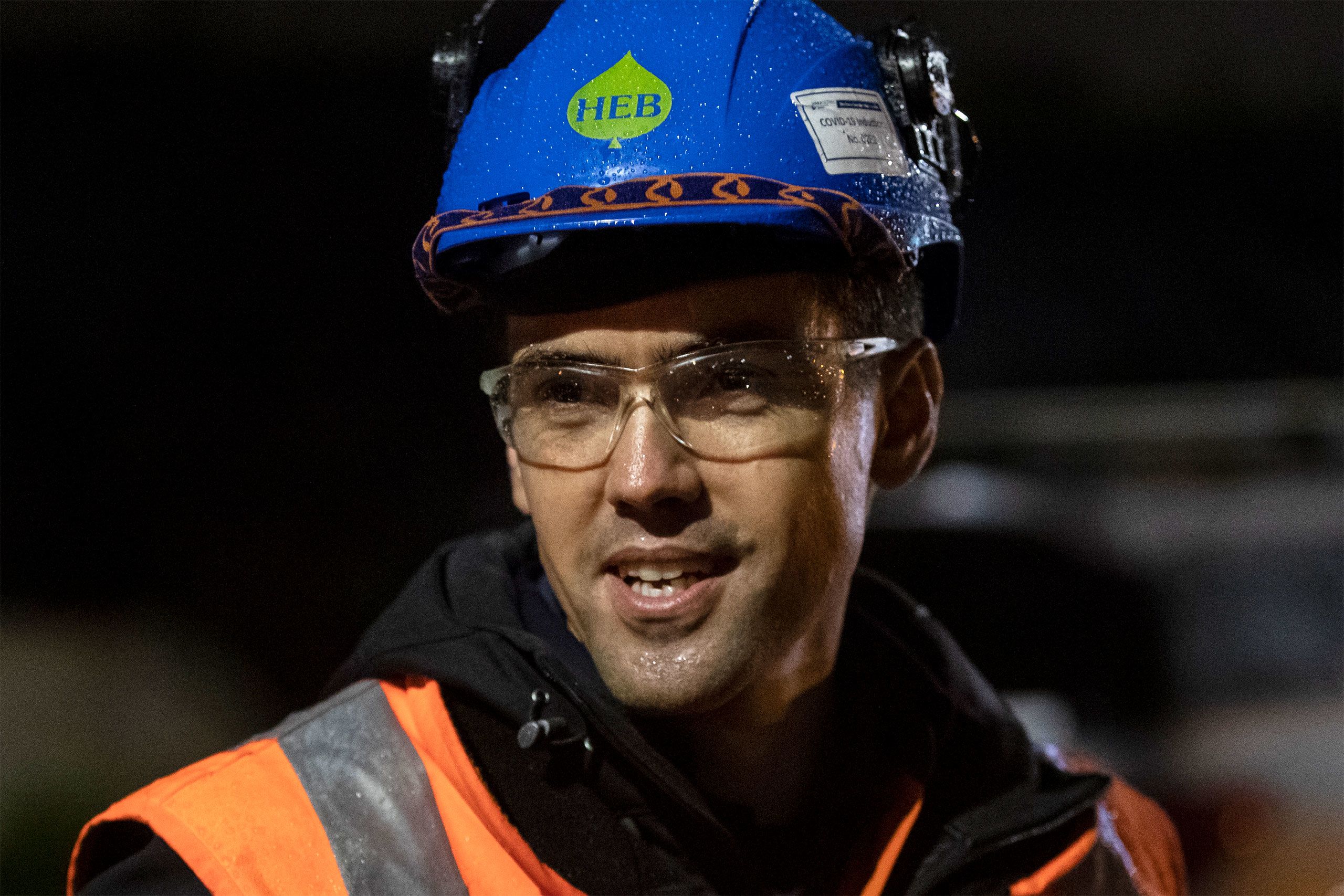




Rain is dripping off bridge manager Jonathan Holdaway’s hard-hat and onto his face, but it doesn’t trouble him.
“It all adds to the buzz doesn't it, orange flashing lights in the rain,” he says. “The majority of roadworks at night, with asphalt and line-marking, the rain would play havoc with that.
“But it's the wind that we need to keep an eye on. It can put more load onto one crane than another.” If the gusts reach 10 metres per second, Holdaway would have to call a halt to the lift.
“It’s seven metres per second. So we're pretty happy it's going to be a good night.”
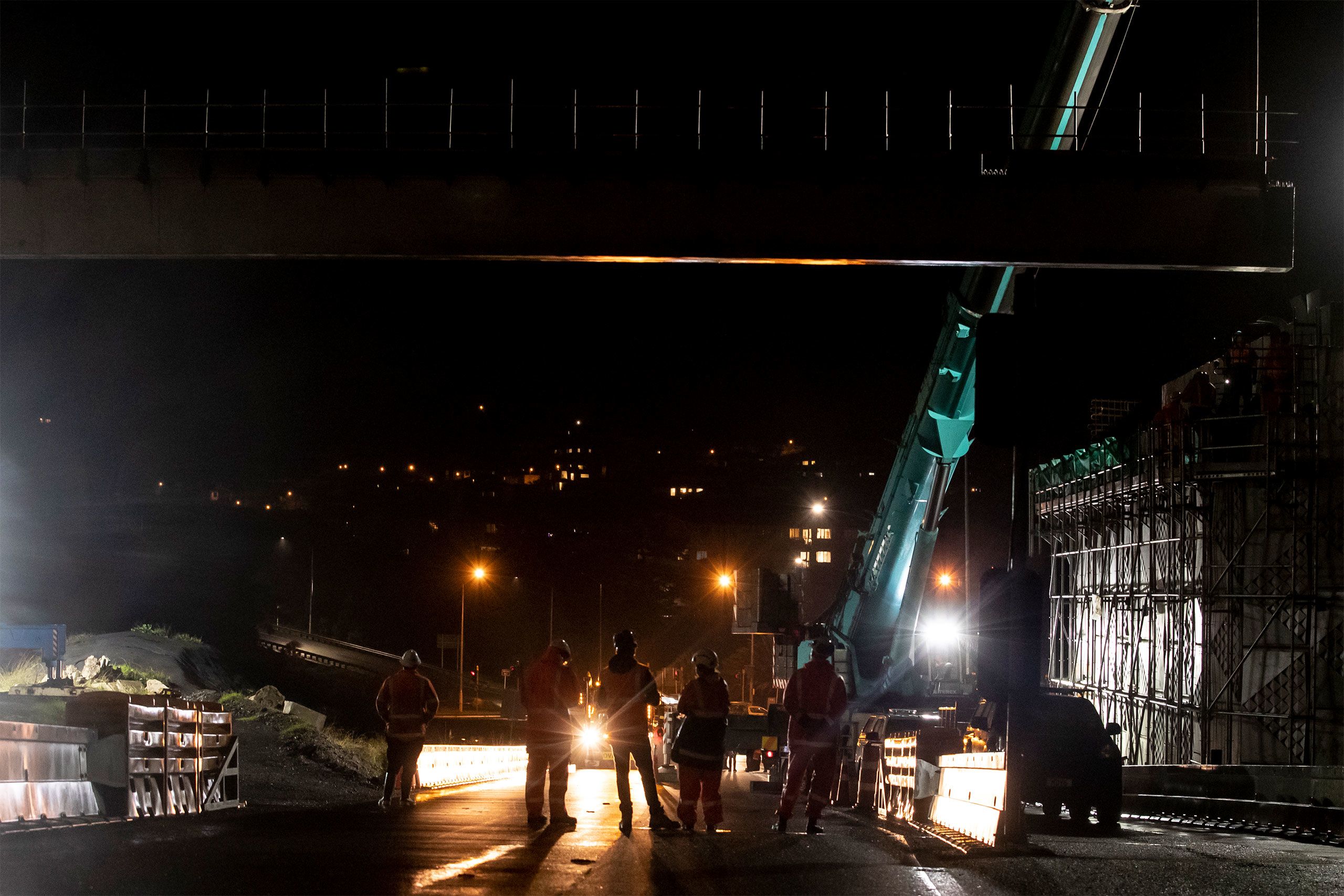
Two huge cranes hoist the bridge beams into place.
Two huge cranes hoist the bridge beams into place.
Half of the bridge is complete, and the spans will be hoisted into place, one at a time. The first lift takes the longest, as the team must build on safety handrails while it is on the ground. The slower they work, the more pressure it puts on Holdaway.
The job must be finished before the road re-opens to traffic. He keeps time with a 15 minute runsheet. “It’s just all about getting off road by 5am. That’s non-negotiable,” he says.
You have to have good planning and every 15 minutes we've got a milestone or somewhere we need to be.
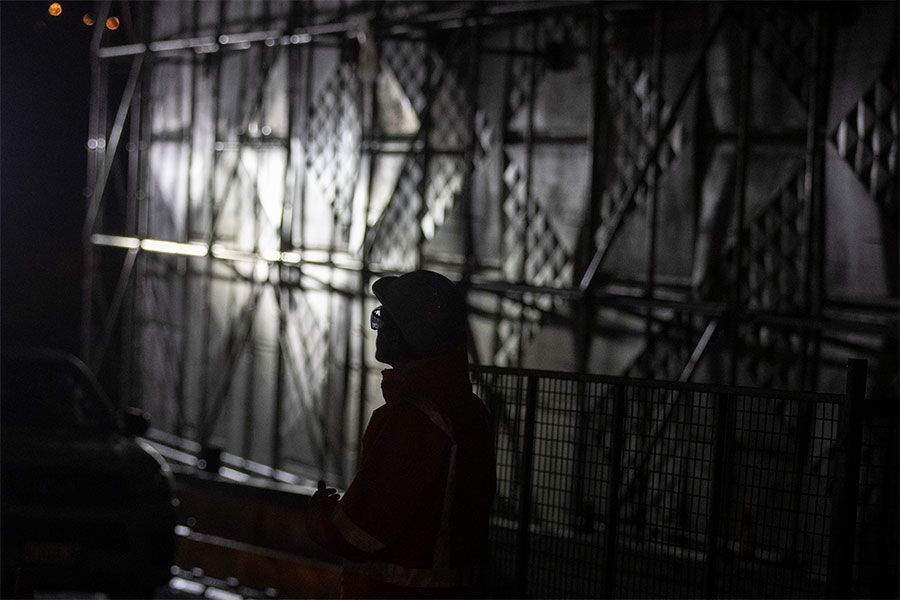
Jonathan Holdaway is an engineer on the Northern Corridor improvements project.
Jonathan Holdaway is an engineer on the Northern Corridor improvements project.
“There is definitely good morale amongst the team. Everyone's here for that sole focus to get the job done and get the road open. There's one team, you're all together, and you're on that task at hand. So now there's a good buzz. It's good to be a part of.”
Holdaway, 35, typically works only a few night shifts in a month. With four children - aged six, seven-year-old twins and a nine year-old - sleeping during the day isn’t easy.
“My personal strategy is just to sleep and in the morning don't set my alarm … typically the first night shift I find that quite hard.
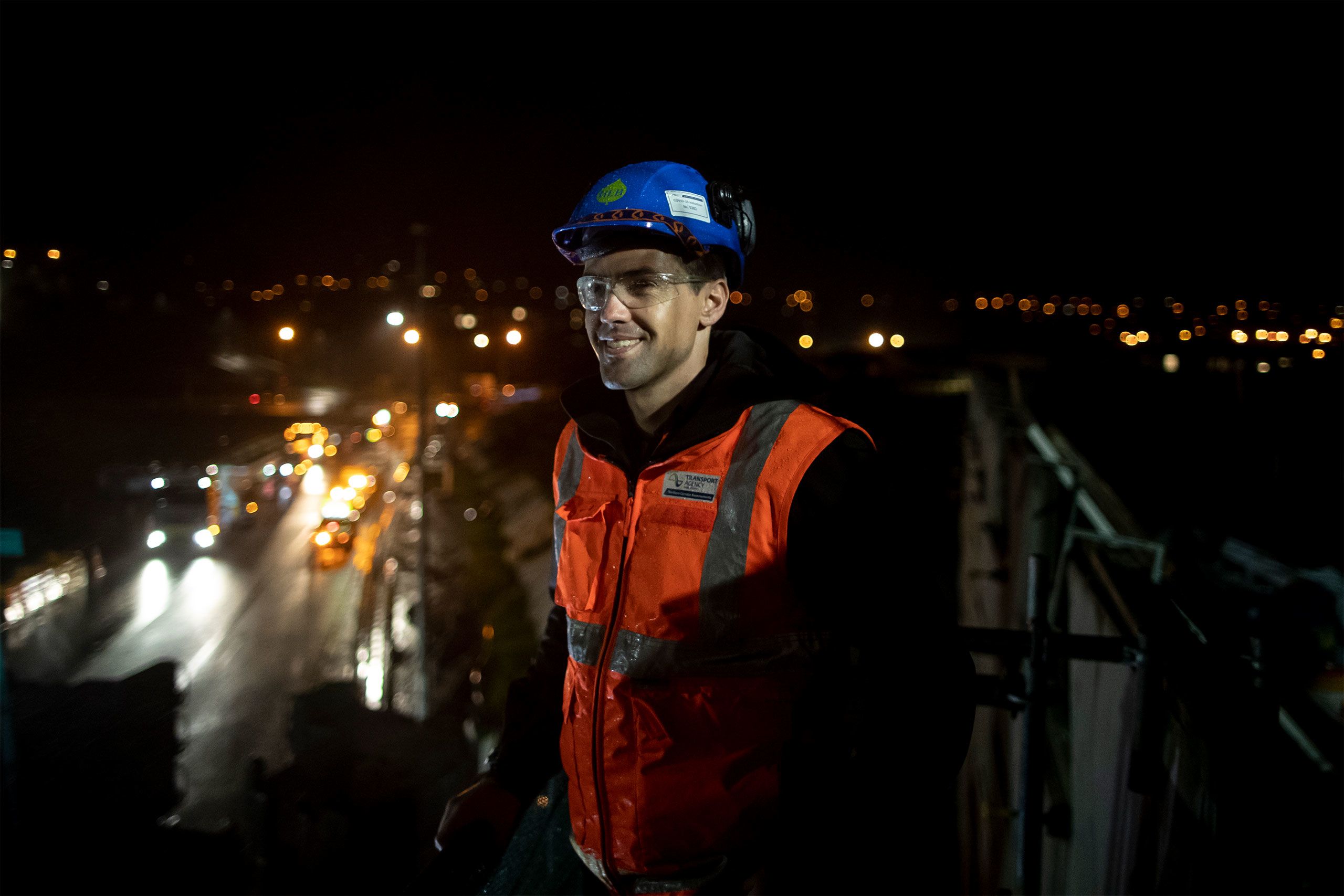
Holdaway has to make sure the works keep to time, and finish by 5am.
Holdaway has to make sure the works keep to time, and finish by 5am.
“It has its benefits. You can go to the bank in the daytime, do your grocery shopping. It does give me the opportunity to see different parts of my life at home.”
Emerson, 26, likes the calm night work brings. “It definitely has a different vibe to it. You do get the serenity and it's less disruptive - you don't get phone calls like you would during the day.”
He’s been a traffic engineer with NZTA for two years and works a week of night shift in a month. “It comes with its own challenges. You have limited resources and a limited amount of people working with you.
“You don't want to disrupt too many people outside of your team on that shift. And beyond that you have a time limit.
“So it can get quite stressful. But, at the same time, you push to innovate and come up with a solution on the spot. And that just makes it more exciting. I suppose.”
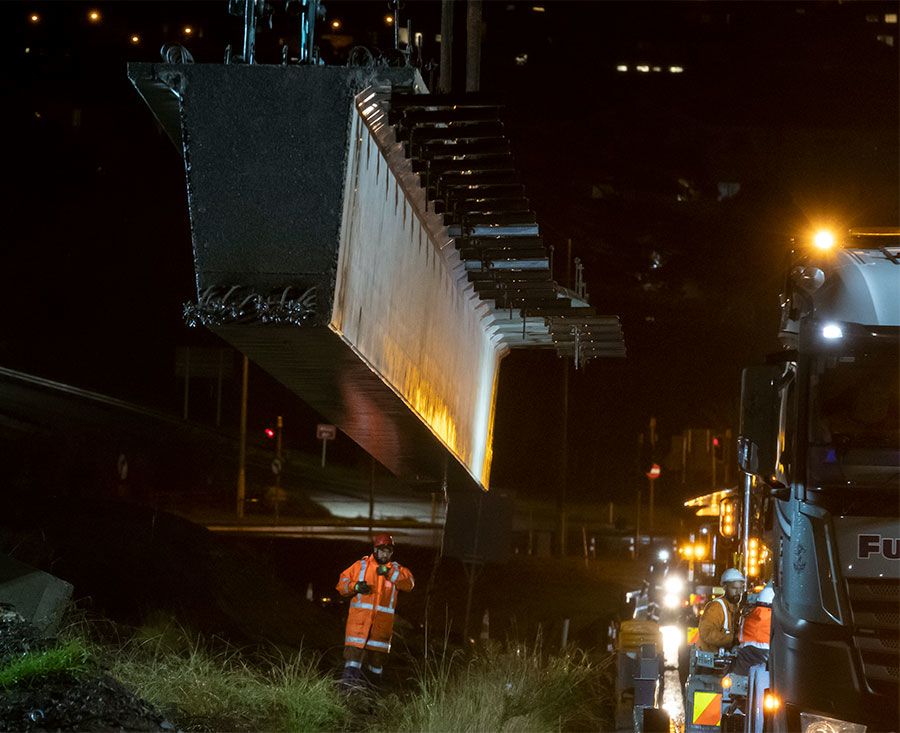
These beams are 30m long and weigh 60 tonne each.
These beams are 30m long and weigh 60 tonne each.
Pressure on the already congested highway through Albany and North Harbour is expected to grow over the next 30 years. The Northern Corridor improvements project will create a new connection, separating local and motorway traffic.
Emerson says he gets a sense of pride from working on a significant piece of infrastructure.
“It’s something that is going to pay off in the future with a better infrastructure and a better transport network ... being able to see the engineering smarts that you put into it come to life. It's highly rewarding.
“It's actually really cool because you get to do something that people don't realise is happening and they wake up in the morning or something has changed and they're probably trying to figure out what has changed. It does give you some excitement.”
Become a Stuff supporter today for as little as $1 to help our local news teams bring you reliable, independent news you can trust.
Contribute Now
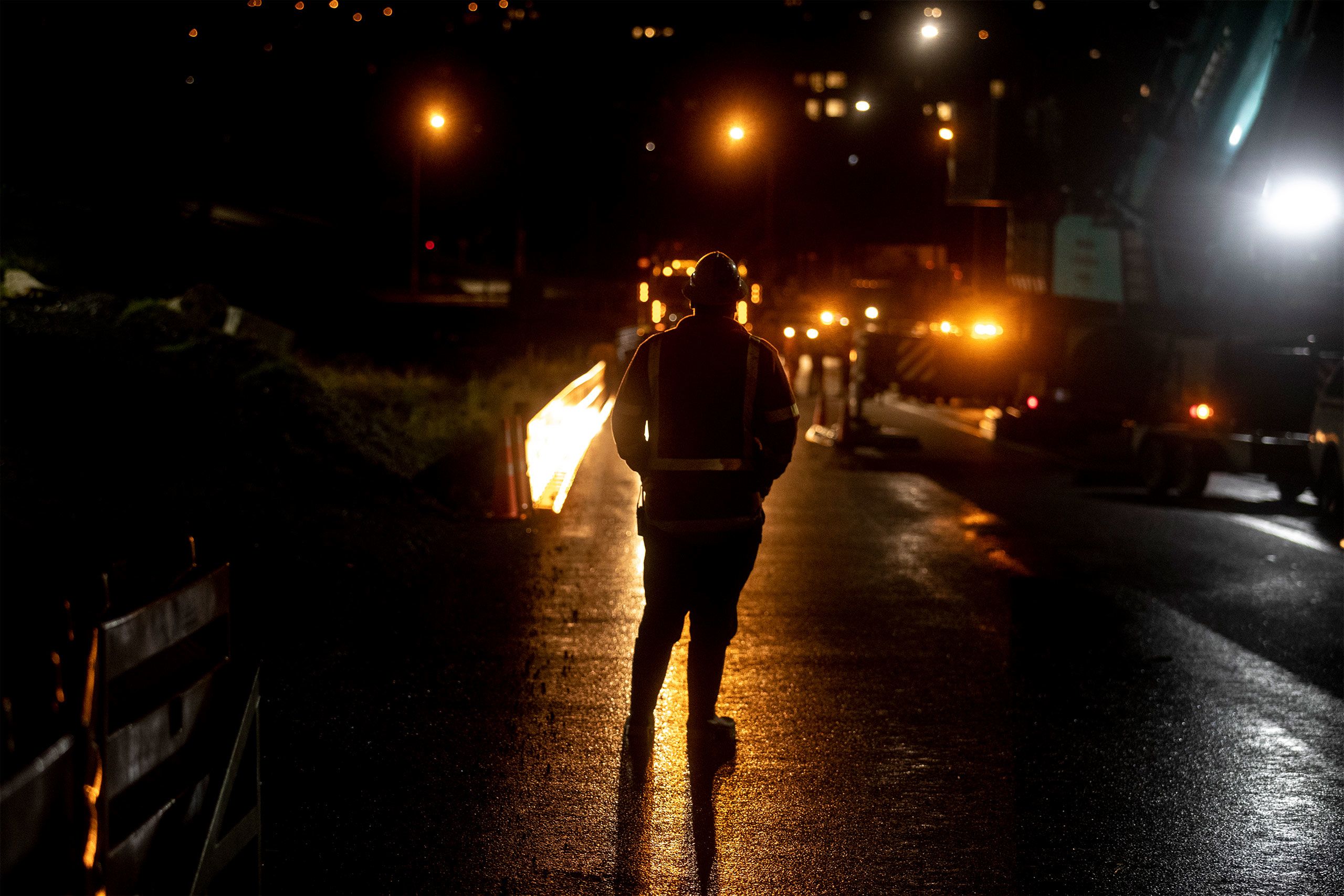
Words: Andrea Vance
Visuals: Iain McGregor
Design & layout: Aaron Wood
Editor: John Hartevelt
Executive Editor: Bernadette Courtney










